Nexus 7 (2013) - Mini Review
by Brian Klug on July 27, 2013 12:54 AM EST- Posted in
- Tablets
- Snapdragon
- Qualcomm
- Android
- Mobile
- APQ8064
- Nexus 7
- Android 4.3
Last year the Nexus 7 debuted with a Tegra 3 SoC, which for reminder consisted of a 4+1 architecture of ARM Cortex A9 CPUs, with the 4 A9s built on 40nm G, and the +1 “shadow core” A9 built on 40nm LP (TSMC’s 40 LPG process), accompanied by ULP GeForce GPU with 12 cores running at a max GPU clock of 416 MHz. The exact SoC was NVIDIA’s Tegra 3 T30L, which could run one A9 at up to 1.3 GHz and all A9s at up to 1.2 GHz.
Rather than the relatively logical upgrade path of going to NVIDIA’s Tegra 4 SoC (I’ve heard all manner of speculation about what happened there), the new Nexus 7 switches to Qualcomm’s APQ8064–1AA, a version with 4 Krait 300 CPU cores (yes, Krait 300, not 200) running at up to 1.5 GHz and Adreno 320 graphics. Rather than use a PoP and LPDDR2, this specific APQ8064 variant goes to PCDDR3L–1600 MHz instead, including 4, 4Gb discrete 1.35V SK-hynix DRAM devices off to the side (more on the opposite side of the PCB) adding up to 2 GB of RAM. Qualcomm's Snapdragon S4 Pro and Snapdragon 600 branding gets confused here, although Qualcomm is calling the APQ8064 inside the Nexus 7 (2013) S4 Pro, it's more like an underclocked or lower binned Snapdragon 600.
At this point APQ8064 is probably the most well understood SoC in recent memory (so much so that I’m pining for devices to include something different just from an academic perspective) so I’ll spare the very verbal discussion about its performance.
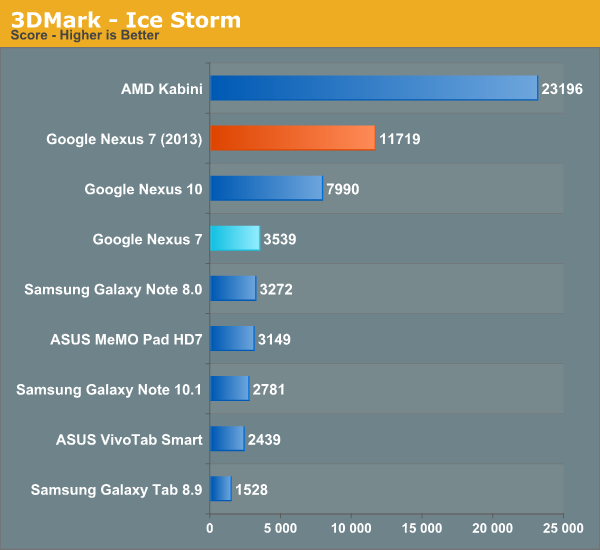



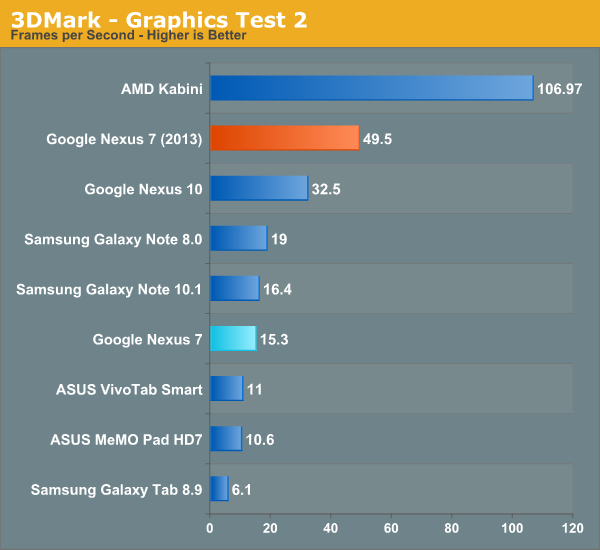
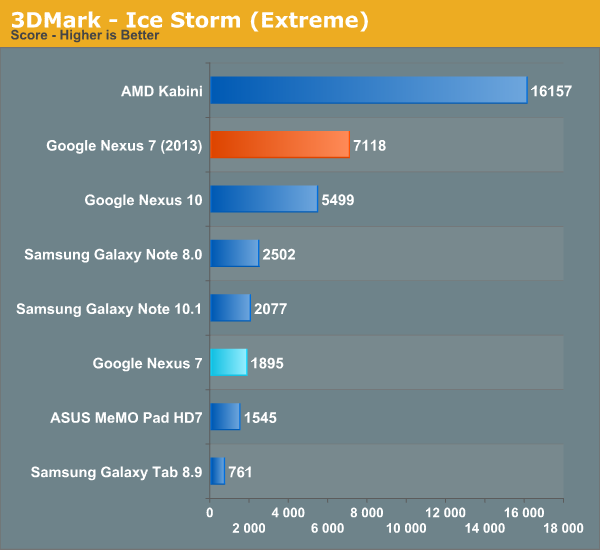

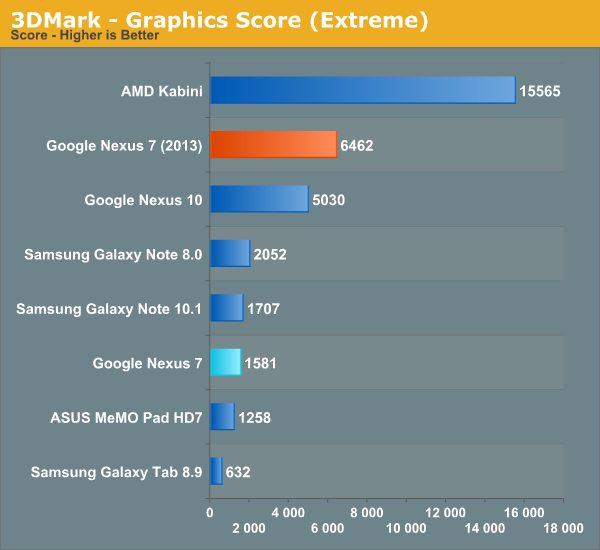

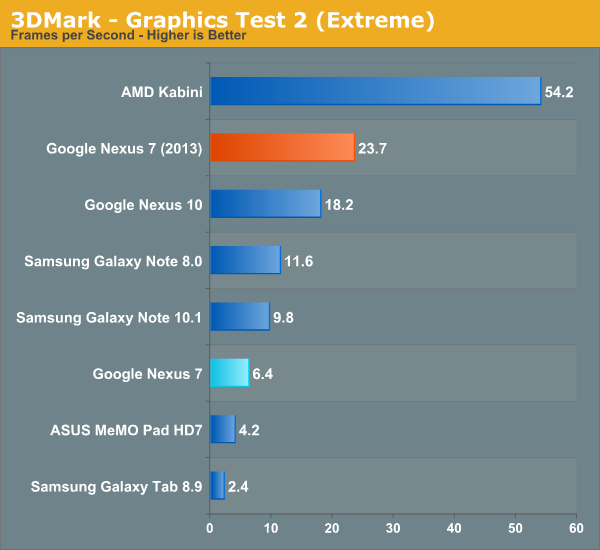


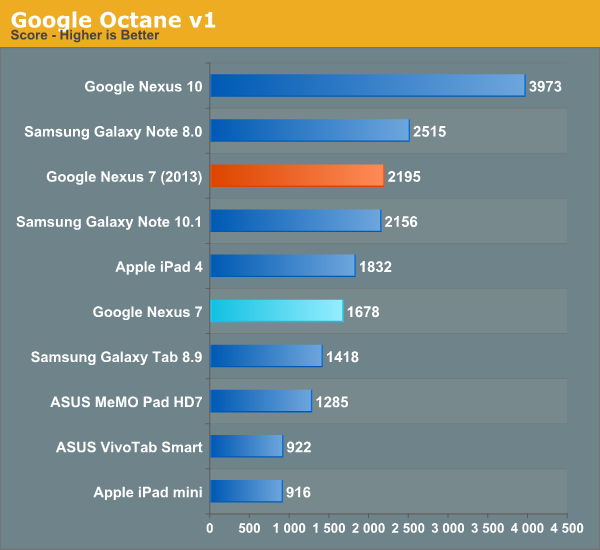
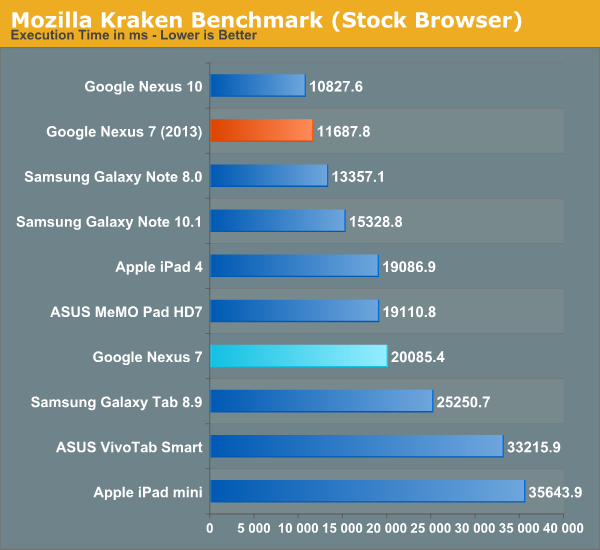
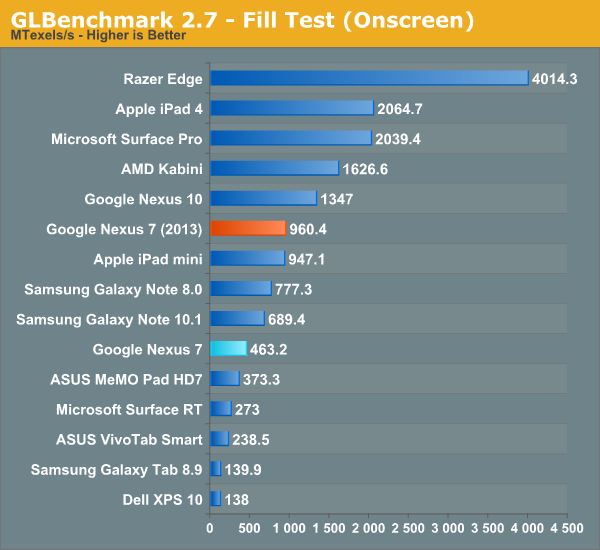
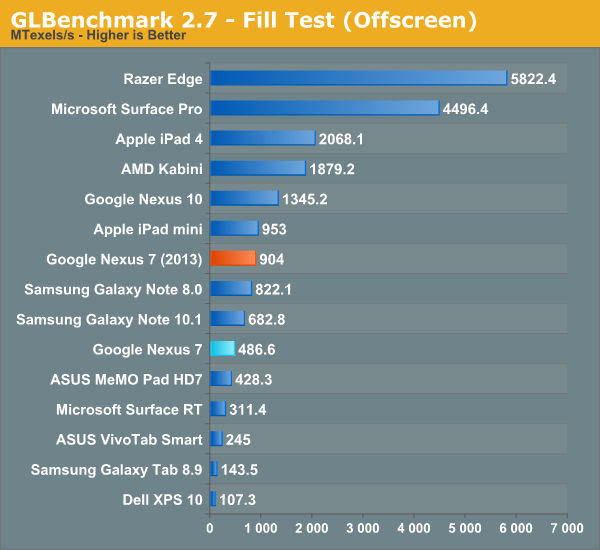
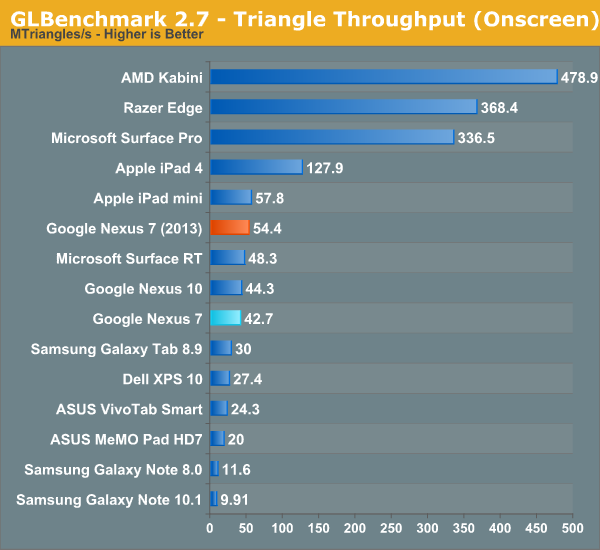
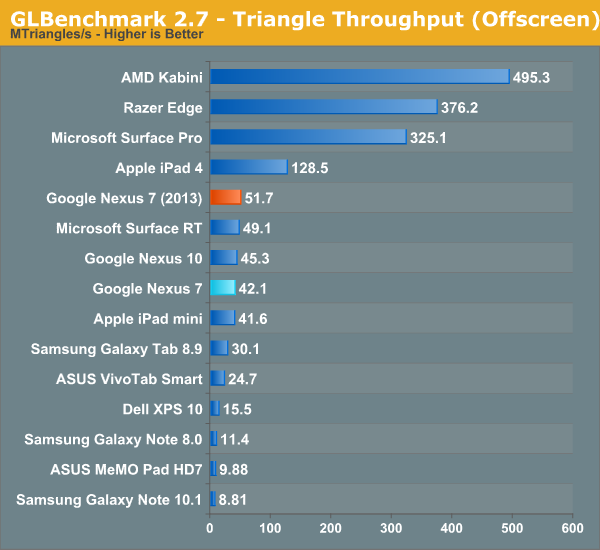
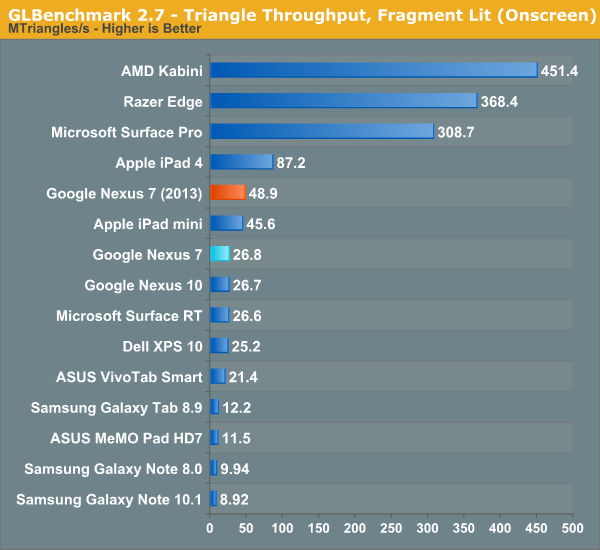
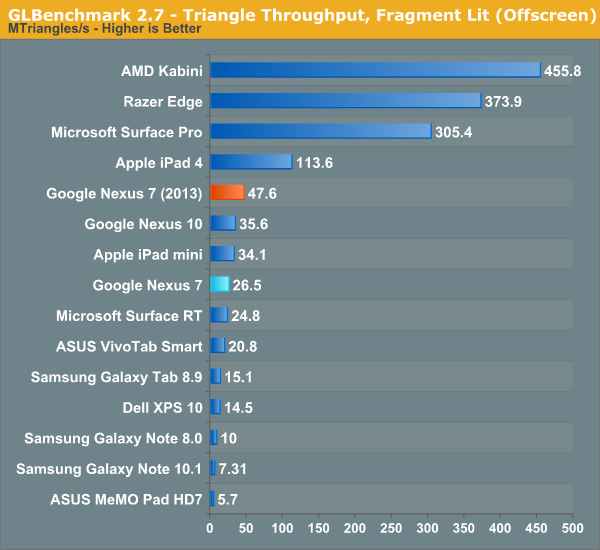
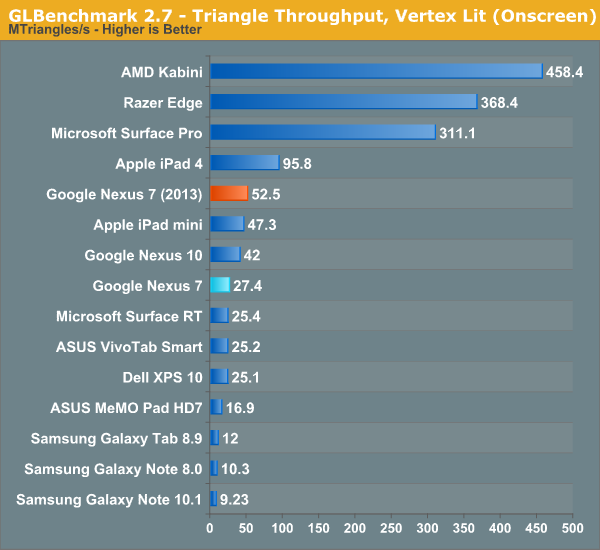
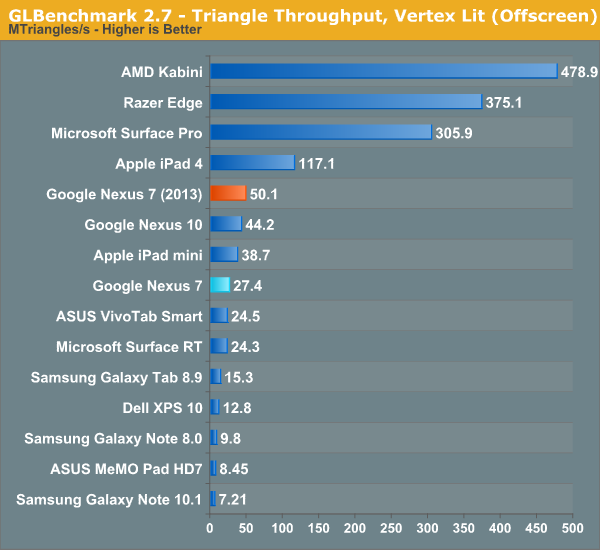

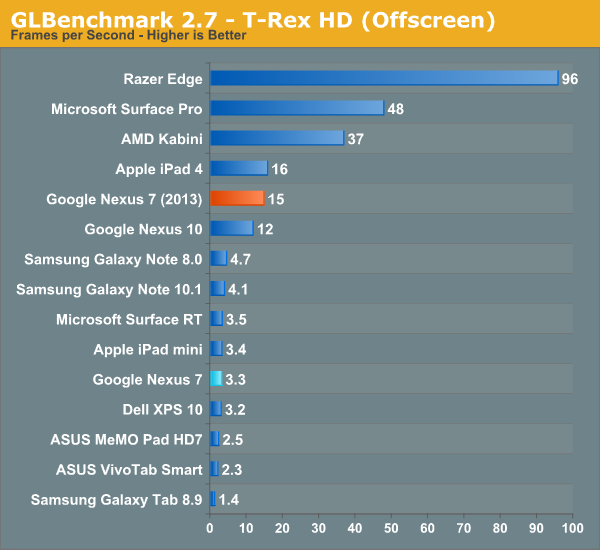
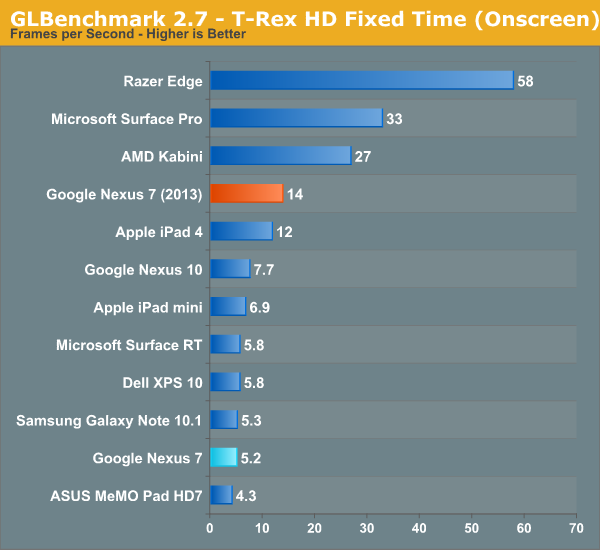
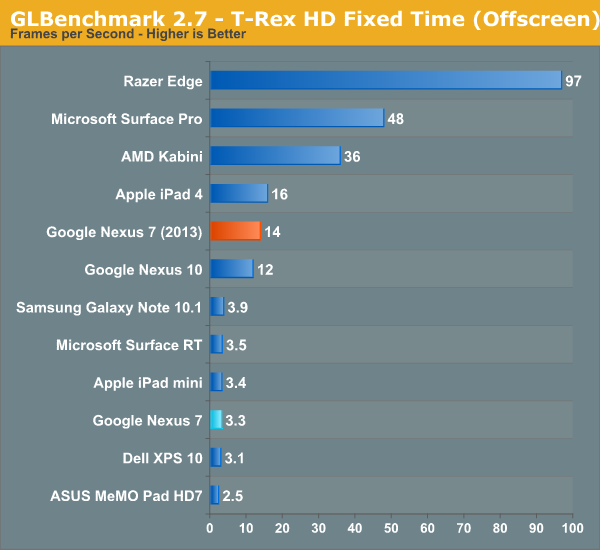
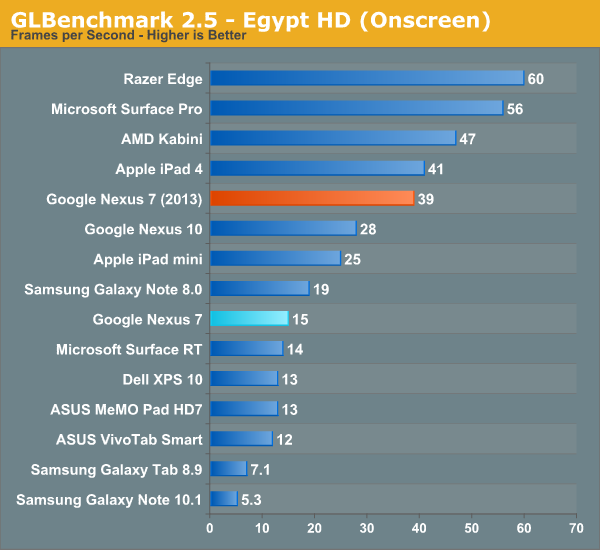
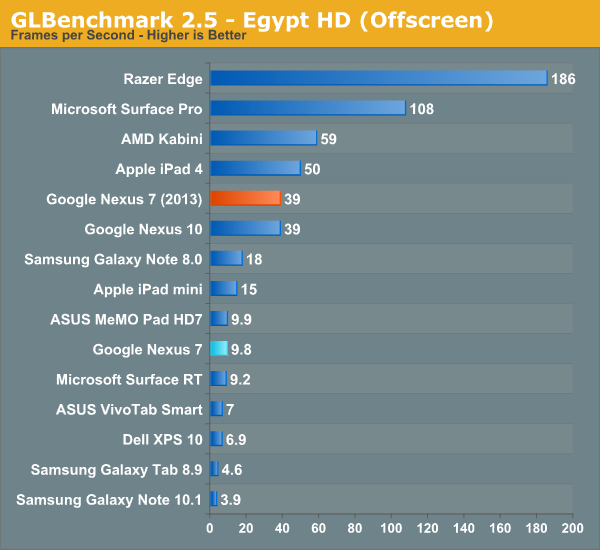
Suffice it to say, moving from 1.2–1.3 GHz Tegra 3 to 1.5 GHz APQ8064 represents a big jump forwards in performance. Google claimed 1.8x improvement on CPU performance, and 4x improvement on GPU, which gets validated pretty much consistently through the benchmarks. I never felt like Tegra 3 was a slouch by any means (performance was more I/O bound on the OG Nexus 7, which we’ll talk about in a moment), but the new Nexus 7 has ample performance for the considerable increase in screen resolution.
Dat eMMC
It wasn’t any secret with the original Nexus 7 that much of the real world performance was gated by storage I/O throughput – we wrote about it after all – and storage performance was a common complaint while multitasking on a few other previous and similar era ASUS tablets. Most of the time performance was acceptable, and for $200 you can’t complain too much about things, the issue was that further on in the life of the tablet performance began degrading somewhat notably, leading to complaints.
Obviously the first thing I did on the Nexus 7 (2013) was run Androbench with the same 100 MB settings to test and see what out of box I/O performance looks like. Things are much better with the new Nexus 7 than they were with the previous one, so at a high level all is good.
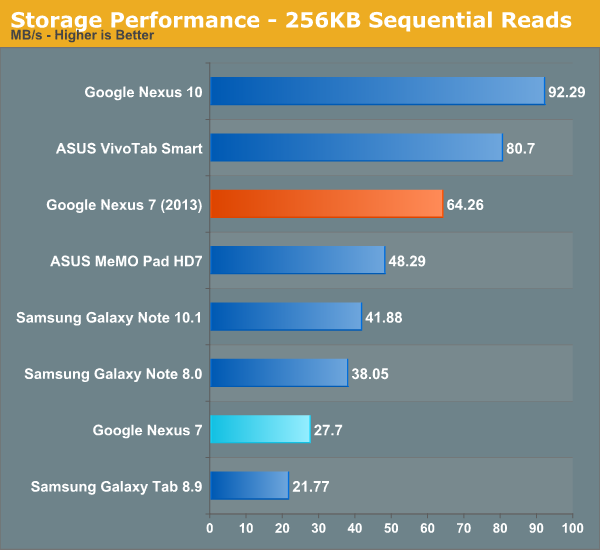
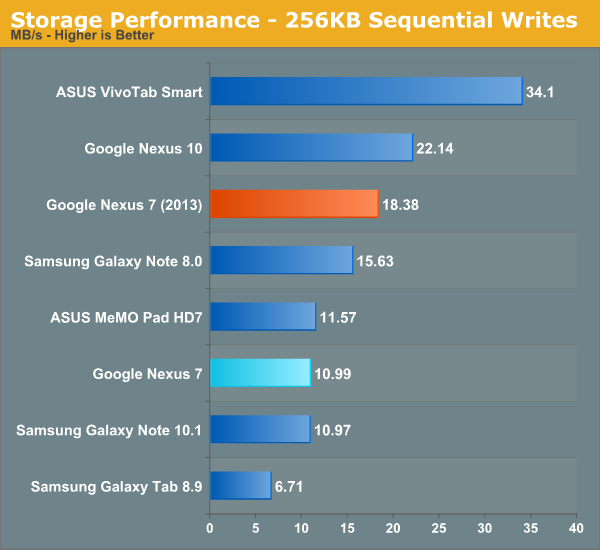
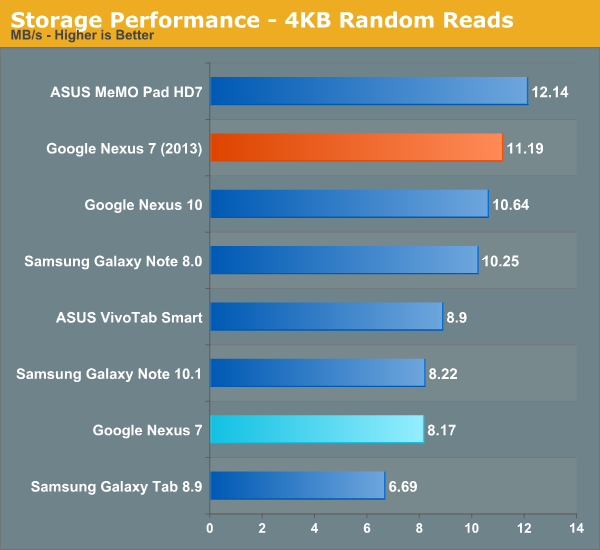

The story actually is a bit more involved however. One of the big problems was that the slowness which occurred with the prior Nexus 7 took device aging to appear – it was great for the first few months, but after you started loading it things tailed off. The new Nexus 7 (2013) with Android 4.3 includes support for fstrim, essentially idle garbage collection, which TRIMs the eMMC when a few conditions are met – the device is idle, screen off, and battery above roughly 70-percent. I’m told that TRIM support has been part of the eMMC standard since around version 4.2, it was just a matter of enabling it in software. The result is that the new Nexus 7 shouldn’t have these aging affects at all. Better yet, fstrim support has also been added to the old Nexus 7 with as of the Android 4.3 update, so if you’ve got a Nexus 7 that feels slow, I/O performance should get better after fstrim runs in the background. I'm checking on whether the other Nexus devices have also had TRIM support added. I would consider the slow storage aging problem fixed as of now, and Google took the eMMC and storage I/O performance issues with the previous Nexus 7 to heart for this version.


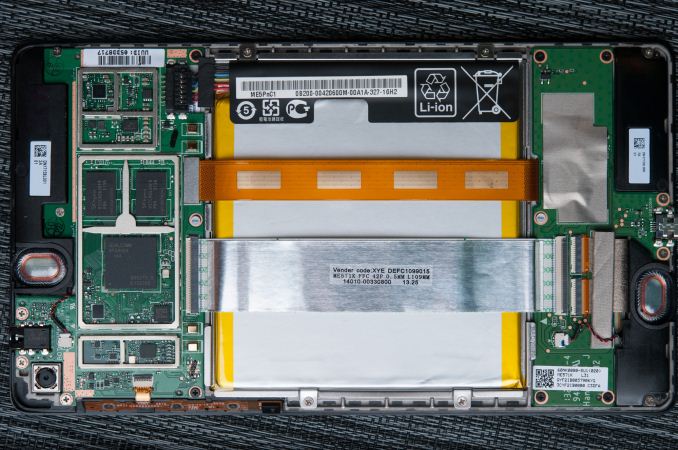
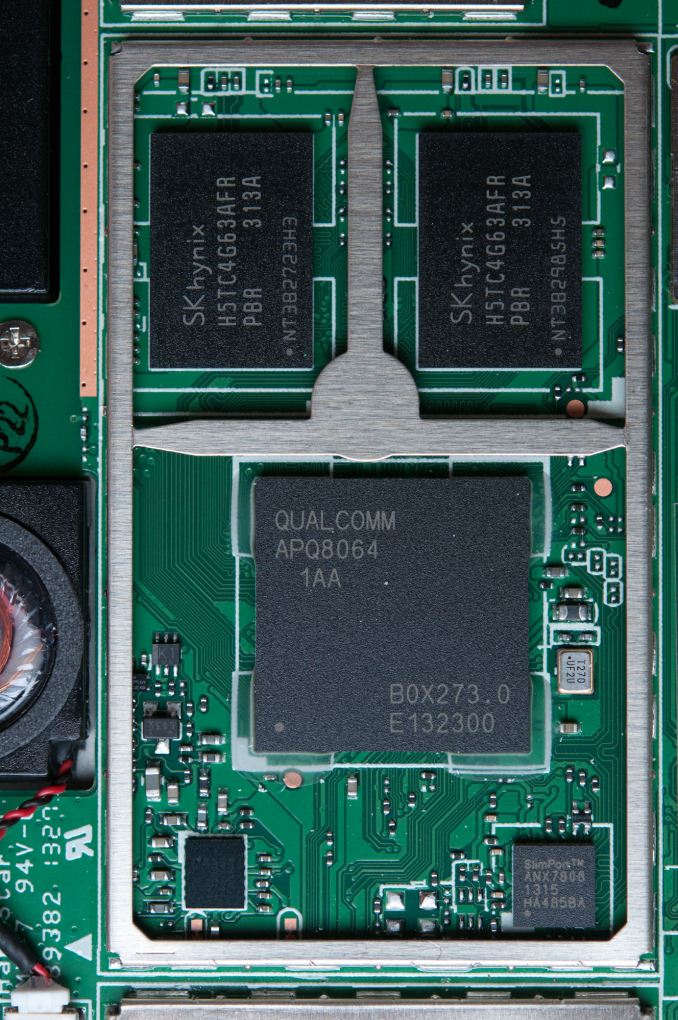














252 Comments
View All Comments
darkich - Sunday, July 28, 2013 - link
That's right. Except that..USB OTG functionality is again absent on the nexus 7.It really baffles me.
Sure, there's rooting, but Google REALLY should've add the USB support out of the box
andrewmu - Monday, July 29, 2013 - link
It's not absent, unless you mean it doesn't ship with the cable. I've got USB OTG working fine on my 2012 Nexus 7 with keyboard, mouse, etc. It's annoying it doesn't natively support USB storage, but that's a more specific issue.broberts - Tuesday, July 30, 2013 - link
OTG is reportedly functional on the 2013 model. Further, WiFi lets you connect to other devices on your LAN and to the cloud. The lack of an SD slot is at best a quibble.JayGrip - Wednesday, July 31, 2013 - link
I have a 2013 nexus 7. I couldn't get otg working but in looking around settings found a setting for hotspot which turns the 7 into router. Es file exployer allows you to run a ftp server and its fast. So I use otg on my note2 to transfer files to nexus 7. 1.2 gig movie about 3.5 minutes.user777 - Thursday, August 1, 2013 - link
I have Nexus 7 2012 and there is no problem to use USB OTG cable + USB stick (or Transcend USB stick with microSD+SD card slot). I use Total Commander+USB Stick plugin (free). It is possible to open any doc/pdf/jpeg/avi/mp4 file.It is possible to share any folder or external HDD at your laptop and to use like WiFi Network LAN storage using ES File Explorer. It is possible to play any movie using streaming (without downloading) from the Network LAN storage (MX Player or BS Player). It is even possible playing movie from WiFi FTP server.
kyuu - Saturday, July 27, 2013 - link
Not sure if serious or just trolling...Krysto - Saturday, July 27, 2013 - link
Apple doesn't use expanded memory either, and they've been selling the tablet at the same high price for years now, and it still only has 16 GB of storage. I'm starting to wonder if they'll ever change it this decade. That $500 should come with 32 GB by default by now.fokka - Saturday, July 27, 2013 - link
yes, but then people who'd also want to _use_ their ipad wouldn't have to purchase the higher-tier 32gb version.to me, a business like this is a scam. i can somehow understand why apple is doing this. they have their itunes ecosystem with sync and whatnot, so expandable memory just doesn't fit in their concept.
but on android it's just different, since expandable memory works out of the box, if an sd-slot is included.
so the only reason is to upsell you to a more expensive sku and in the same time severely limiting total storage, which for me as a music-lover and his 50gb library, is reason enough i will never even think about buying your product.
which is a shame, because the rest of the nexus 7 looks mighty fine.
jt122333221 - Saturday, July 27, 2013 - link
You have about 9k songs, based on a 6mb size for each song. Upload them to Google Play (20,000 songs can be uploaded), download the ones you listen to most to your tablet, and stop complaining - Google's not going to use expandable memory in the near future, as they are trying to push their cloud services. It's (IMO) working well, and their cloud services are great products. The only thing that needs to change is Carriers and their metered data plans.deathdemon89 - Saturday, July 27, 2013 - link
How does the fact that they're "not going to use expandable memory in the near future" make their decision any less wrong? None of what you said can be used as a justification - in fact, it highlights a very real issue. Cloud services, no matter how "great" they are, can NOT compete with the convenience, accessibility and reliability of expandable storage. This holds even truer in non-U.S. markets where data services are even less developed. At the end of the day, the theoretical risks of cloud data are far higher than the equivalent risks of expandable storage.